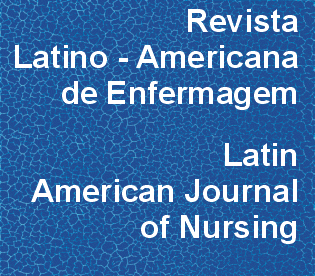Integrative review: evidences on the practice of intermittent/indwelling urinary catheterization
DOI:
https://doi.org/10.1590/S0104-11692013000100023Keywords:
Urinary Catheterization, Urinary Tract Infections, Evidence-Based Nursing, NursingAbstract
OBJECTIVE: to seek the best evidence available in the literature concerning the knowledge produced and related to the techniques of intermittent and indwelling urinary catheterization, so as to place the nursing care given to patients submitted to urinary catheterization on a scientific foundation and to prevent urinary tract infections. METHOD: the literature search was undertaken in the Pubmed and Cochrane databases for the development of the integrative review. The sample was of 34 articles. These were analyzed by two independent researchers using an instrument adapted for ascertaining the level of evidence and the grade of recommendation, in addition to the use of the Jadad scale. RESULTS: the evidence available related to the nursing care for patients submitted to urinary catheterization is: the infection rate in the urinary tract does not alter whether the perineum is cleaned with sterile water or not, or with the use of povidone-iodine solution or chlorhexidine; or using clean or sterile technique. The use of an intermittent catheter with clean technique results in low rates of complications or infections compared to the use of an indwelling catheter. The removal of the catheter in up to 24 hours after surgery and the use of an antimicrobial-impregnated or hydrophilic-coated catheter reduce urinary tract infection . CONCLUSIONS: there are controversies in relation to periurethral cleansing technique, the type of material the catheter is made of, and some procedures for the maintenance and removal of the catheter. This review's results represent an updating of the nurse's conducts and decision-making for the prevention of urinary tract infections in urinary catheterization.Downloads
Download data is not yet available.
Downloads
Published
2013-02-01
Issue
Section
Review Articles
License
RLAE’s authorship concept is based on the substantial contribution by each of the individuals listed as authors, mainly in terms of conceiving and planning the research project, collecting or analyzing and interpreting data, writing and critical review. Indication of authors’ names under the article title is limited to six. If more, authors are listed on the online submission form under Acknowledgements. The possibility of including more than six authors will only be examined on multicenter studies, considering the explanations presented by the authors.Including names of authors whose contribution does not fit into the above criteria cannot be justified. Those names can be included in the Acknowledgements section.
Authors are fully responsible for the concepts disseminated in their manuscripts, which do not necessarily reflect the editors’ and editorial board’s opinion.
How to Cite
Integrative review: evidences on the practice of intermittent/indwelling urinary catheterization . (2013). Revista Latino-Americana De Enfermagem, 21(1), 459-468. https://doi.org/10.1590/S0104-11692013000100023



